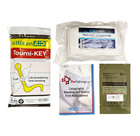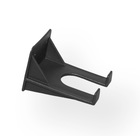Head Injuries
Unlock This Video Now for FREE
This video is normally available to paying customers.
You may unlock this video for FREE. Enter your email address for instant access AND to receive ongoing updates and special discounts related to this topic.
Managing Head Injuries: First Aid Guidelines and Treatment
Head injuries are common and may sometimes require minimal treatment. However, it is crucial to understand that underlying problems can be difficult for first aiders to detect. The brain, a sensitive organ, is protected by the skull and cerebrospinal fluid, but injuries can still occur.
Assessing for Spinal Injury
When dealing with a head injury, always suspect a spinal injury and assess how the injury occurred. This will help determine if a spinal injury could be present.
Evaluating Consciousness Levels
Patients with head injuries may be at various levels of consciousness. They could be fully alert, dazed, appear unconscious but still hear, or be entirely unconscious. Use the AVPU scale to assess their level of consciousness:
- A - Alert: Are they alert, with eyes open and responding to questions?
- V - Voice: Do they respond to voice, answering simple questions or commands?
- P - Pain: Do they respond to pain, such as a pinch, with eye or motor responses?
- U - Unresponsive: Are they unresponsive, with no eye, voice, or motor responses?
Record your findings and repeat the assessment to monitor any changes. If you have concerns, activate emergency services as head injuries can be very serious.
Handling the Patient
While dealing with a head injury, monitor the patient carefully. They might exhibit unusual behaviour, such as aggression, and there may not always be an obvious injury site. Shock or impacts elsewhere in the body, such as the feet, can transmit through the spine to the base of the skull.
Types of Head Injuries
Concussion
A concussion occurs when a blow to the head causes the brain to move, leading to temporary disturbances in brain function. Symptoms can range from mild to severe and may include:
- Headache and dizziness
- Nausea and loss of balance
- Confusion and memory difficulties
- Feeling dazed or stunned
Emergency treatment may be required in some cases.
Cerebral Compression
Cerebral compression is a serious condition where pressure on the brain is caused by swelling or bleeding. It can result from a head injury, stroke, brain tumour, or infection. Symptoms include:
- Personality changes
- Deteriorating consciousness
- Slow, noisy breathing
- Intense headache
- Vomiting and drowsiness
- Slow but strong pulse
- Unequal pupils
- Weakness or paralysis on one side
- Evidence of injury and tiredness
Cerebral Contusion
Cerebral contusion involves bruising of the brain and occurs in 20% to 30% of head injuries. Symptoms vary based on the contusion’s location and may include:
- Motor coordination problems
- Numbness
- Memory issues
Skull Fractures
Skull fractures result from direct or indirect force to the skull. Symptoms can include:
- Blood or clear fluid from ears or nose
- Blood in the whites of the eyes
- Impact evidence or bruising
Treatment for Head Injuries
The treatment for head injuries involves:
- Be aware of potential spinal injury
- Control bleeding and activate emergency medical services (EMS)
- Lie the patient down with their head and shoulders raised
- Monitor the patient’s breathing
- Avoid giving any food or drink
Understanding the types of head injuries and proper first aid responses is crucial for effective management and ensuring the best outcomes.

_-Trauma_20x30_CE.jpg)
_-Trauma_10x10_CE.jpg)




